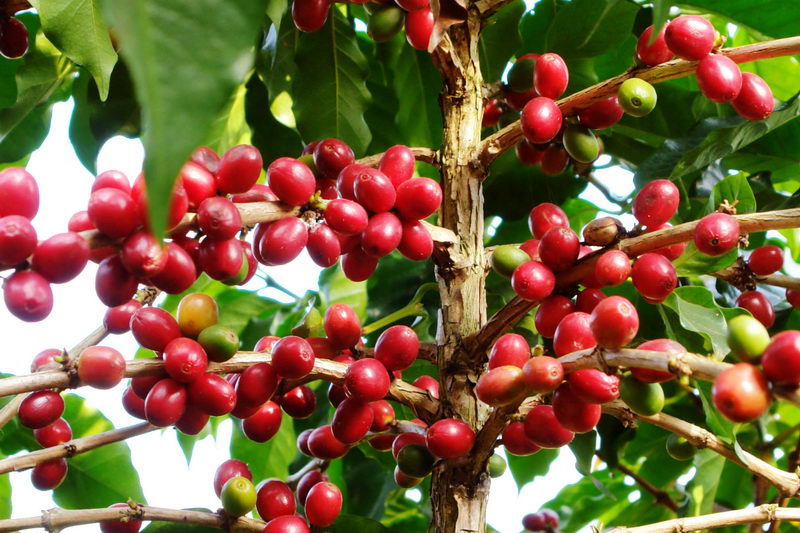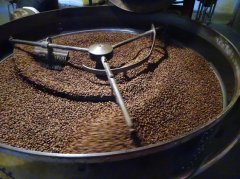The 7 Most Common Iced Coffee Practices of the Year How to Make an Authentic Iced Coffee
For professional baristas, please follow the coffee workshop (Wechat official account cafe_style)

Cold coffee: coffee is soaked in lukewarm (that is, cold or room temperature) water for a period of , usually 8-24 hours. The coffee-to-water ratio is usually (but not always) designed to produce concentrates for dilution with ice and / or milk when taken.
Japanese iced coffee: sometimes referred to as "quick refrigerated" or "quick brewed" iced coffee. Japanese iced coffee is brewed directly on ice. This differs from unspecified "iced coffee" in that it is brewed directly on ice, especially considering the proportion of ice diluted immediately after melting.
Nitrogen coffee: the "nitrogen" state of coffee drinks has nothing to do with their brewing methods. It simply refers to any coffee that is packaged, distributed on a nitrogen-driven faucet, or both filled with nitrogen. Nitro groups are most closely related to cold brewing, although nitrogen treatment can be used in any brewing.
Ice drop: 1. Close the droplet regulating valve first.
two。 Pour the right amount of drinking cold water into the water bottle according to the number of users, and add the right amount of ice to make iced coffee. The standard water quantity for one person is about 120CC.
3. Wet the filter cloth filter with water, then put it into the coffee powder cup
4. Put the right amount of coffee powder into the coffee powder cup, and the standard amount for one person is about 10-12g very fine ground coffee powder.
5. Finally, put the pill filter paper on the central surface of the coffee powder (No. 6 pill filter paper for the water drop coffee maker), and the pill filter paper should be placed on the landing point for the water drop under the water bottle.
6. Slowly open the droplet adjustment valve to allow water droplets to flow out of the water bottle, the water droplets should be dripped on the pellet filter paper, the standard droplet speed should be 40-60 drops per minute, and should be adjusted every 2 hours.
7. The water droplets will permeate the pellet filter paper and coffee powder, make coffee, pass through the cloth filter, and finally fall into the coffee liquid container. Cold and delicious, 100% original water drop coffee is finished.
Three warm hand brewing: standard cold brewing, the other first step is to use hot water to "steam" the coffee, and then add the required proportion of cold water to prolong the steep slope. The purpose of steamed coffee is to promote more uniform extraction, while also pulling out more acids and other volatile compounds, helping to balance the properties and more indicating the origin characteristics of a given coffee.
Fast-cooling coffee: coffee is usually brewed into heat and then cooled quickly through a heat exchanger system similar to that used in the beer and wine industries. Its principle is the same as the Japanese direct ice method, but has more control over the refrigeration process, and later dilution is more flexible, including non-dilution options.
Pressure brewed coffee: often mixed with standard cold brews, which may be similar to the longer steepness that may be involved at lower temperatures, although hot-pressed coffee products also exist in production. The main difference is that the mixture of water and coffee is brewed in a sealed, pressurized environment or container. It is known that pressurization will lead to more effective extraction of soluble compounds, and the tightness of this method also prevents oxidation. If the flavor is not protected, the shelf life of the product will be prolonged.
Iced coffee: coffee brewed by any standard brewing method, cold and cold.
Important Notice :
前街咖啡 FrontStreet Coffee has moved to new addredd:
FrontStreet Coffee Address: 315,Donghua East Road,GuangZhou
Tel:020 38364473
- Prev

The concept of Coffee roasting study on roasting Technology of Coffee roasting tendency in various countries
Professional barista exchanges please follow the coffee workshop (Wechat official account cafe_style) Open Classification: coffee technology roasting is the source of coffee flavor, raw beans are called roasting, raw beans can not be drunk without baking, roasted beans have determined 80% of the taste of coffee, the roasting process is very tricky, the fire is too strong, the outer ripe is endogenous, the fire is too weak, then the inner ripe is overcooked.
- Next

Introduction to the History of Coffee in Martinique, the birthplace of Coffee in Central America
Professional baristas follow the coffee workshop (Wechat official account cafe_style) Martinique is a small island and the birthplace of coffee in Central America, but it produces very little coffee today. The first coffee tree in the Western Hemisphere was brought from France by Gabriel Mathieu de Clieu in the early 1820s. Good morning, Dirkley.
Related
- Beginners will see the "Coffee pull flower" guide!
- What is the difference between ice blog purified milk and ordinary milk coffee?
- Why is the Philippines the largest producer of crops in Liberia?
- For coffee extraction, should the fine powder be retained?
- How does extracted espresso fill pressed powder? How much strength does it take to press the powder?
- How to make jasmine cold extract coffee? Is the jasmine + latte good?
- Will this little toy really make the coffee taste better? How does Lily Drip affect coffee extraction?
- Will the action of slapping the filter cup also affect coffee extraction?
- What's the difference between powder-to-water ratio and powder-to-liquid ratio?
- What is the Ethiopian local species? What does it have to do with Heirloom native species?

